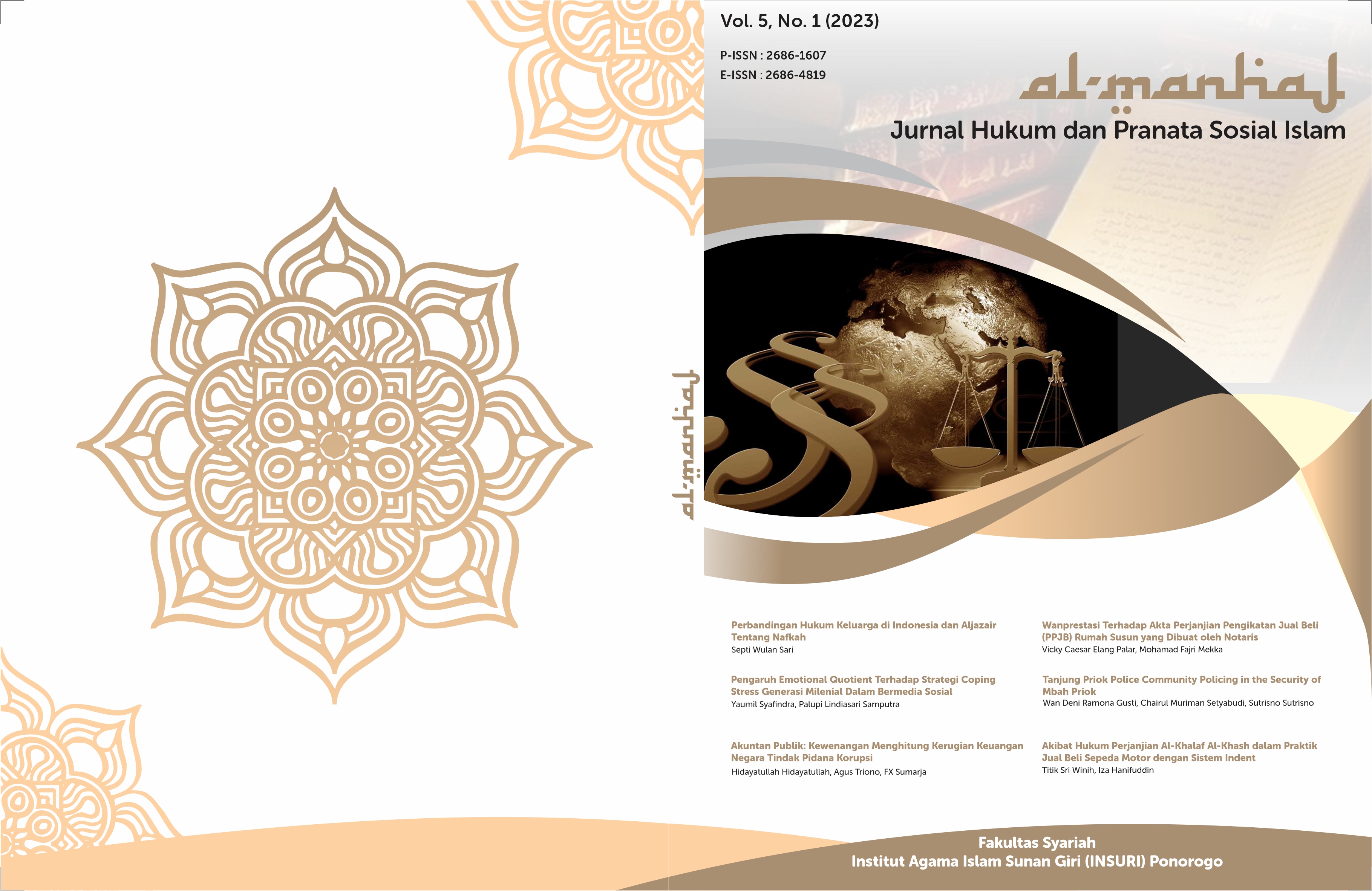Tinjauan Hukum Pembubaran Perseroan Terbatas Atas Keputusan Rapat Umum Pemegang Saham (RUPS) Sesuai dengan Aturan Hukum Indonesia dan Malaysia
DOI:
https://doi.org/10.37680/almanhaj.v5i1.2874Keywords:
Disolution; Limited Liability Company; General Meeting of ShareholdersAbstract
The dissolution of a limited liability company is also very dependent on the actions of the GMS which is the highest organ in a limited liability company in making company decisions that will determine the directors in taking the direction of company policy in dissolving the company, this is because the directors are still bound and bear legal consequences if the mechanism for dissolving the company is carried out in an incorrect manner and violates the provisions of the law. The problem in this study is related to the company that does not have assets at the time of dissolution and compared with the legal rules of dissolution of the company in Indonesia with those in Malaysia. The method in this research is normative juridical. The results of this study indicate that there are some similarities and differences in the process of dissolution of a limited liability company according to legal provisions in Indonesia and Malaysia which are ASEAN countries, this is because the legal system used by Indonesia adheres to the civil law legal system, while Malaysia is common law.
References
Dewi Oktavia, & Irene Svinarky. (2021). , Analisis Yuridis Kedudukan Surat Pernyataan Setor Modal Sebagai Pengganti Bukti Setor Modal Dalam Pendirian Perseroan Terbatas Di Indonesia. Jurnal Gagasan Hukum Universitas Putera Batam, 63–64.
Erman Rajagukguk. (2007). Pengelolaan Perusahaan Yang baik: Tangoing Jawab Pemegang Saham, Komisaris, dan direksiyon. Jurnal Hukum Bisnis, 26(3), 225–227.
Frans Satrio Wicaksono. (2009). Tanggungjawab Pemegang Saham, Direksi dan Komisari Perseroan Terbatas. Jakarta: Vismedia.
Gunawan Widjaja. (2006a). Seri Aspek Hukum Bisnis.
Gunawan Widjaja. (2006b). Seri Aspek Hukum Dalam Bisnis. Jakarta: Prenada Media Group.
Harijan Rusli. (2003). Hukum Ketenagakerjaan Indonesia.
Ida Bagus Putra Pratama, & Made Dedy Priyanto. (n.d.). Kepastian Hukum Modal Dasar Pendirian Perseroan Terbatas Berdasarkan Peraturan Pemerintah Perubahan Modal Dasar Perseroan Terbatas. Bali: Fakultas Hukum Universitas Udayana.
Kansil. (1996). Hukum Perusahaan Indonesia.
M. Yahya Harahap. (2001). Hukum perseroan Terbatas.
Mahmud Marzuki, P. (2011). Penelitian Hukum, . Kencana.
Purba Orinton. (2022). Petunjuk Praktis bagi Rups Komisaris dan Perseroan Terbatas agar Terhindar dari jerat hukum. jakarta: rain asa sudses.
Ridwan khairandy. (2009). Perseroan Terbatas, Dokrtrin, Peraturan Perundang-undangan dan Yurisprudensi,.
Sri Mamudji. (2005). Metode Penelitian dan Penulisan Hukum. Jakarta : Badań Penerbit Fakultas Hukum Universitas Indonesia.
Undang-Undang Nomor 40 Tahun 2007tentang Perseroan Terbatas, L.N. Tahun 2007 Nomor 106, TLN 4756, Ps. 1 ayat (1).
Yan Pramadya Puspa. (2008). kamus Hukum edişi lengkap Bahasa belanda. semarang: aneka ilmu.
Downloads
Published
How to Cite
Issue
Section
License
Copyright:
- Author retains the copyright and grants the journal the right of first publication of the work simultaneously licensed under a Creative Commons Attribution 4.0 International License that allows others to share the work with an acknowledgment of the work's authorship and initial publication in this journal.
- Author is able to enter into separate, additional contractual arrangements for the non-exclusive distribution of the journal's published version of the work (e.g., post it to an institutional repository or publish it in a book) with the acknowledgment of its initial publication in this journal.
- Author is permitted and encouraged to post his/her work online (e.g., in institutional repositories or on their website) prior to and during the submission process, as it can lead to productive exchanges, as well as earlier and greater citation of the published work (See The Effect of Open Access).
License:
-
Attribution — You must give appropriate credit, provide a link to the license, and indicate if changes were made. You may do so in any reasonable manner, but not in any way that suggests the licensor endorses you or your use.
-
No additional restrictions — You may not apply legal terms or technological measures that legally restrict others from doing anything the license permits.
You are free to:
- Share — copy and redistribute the material in any medium or format
- Adapt — remix, transform, and build upon the material for any purpose, even commercially.

This work is licensed under a Creative Commons Attribution 4.0 International License.














